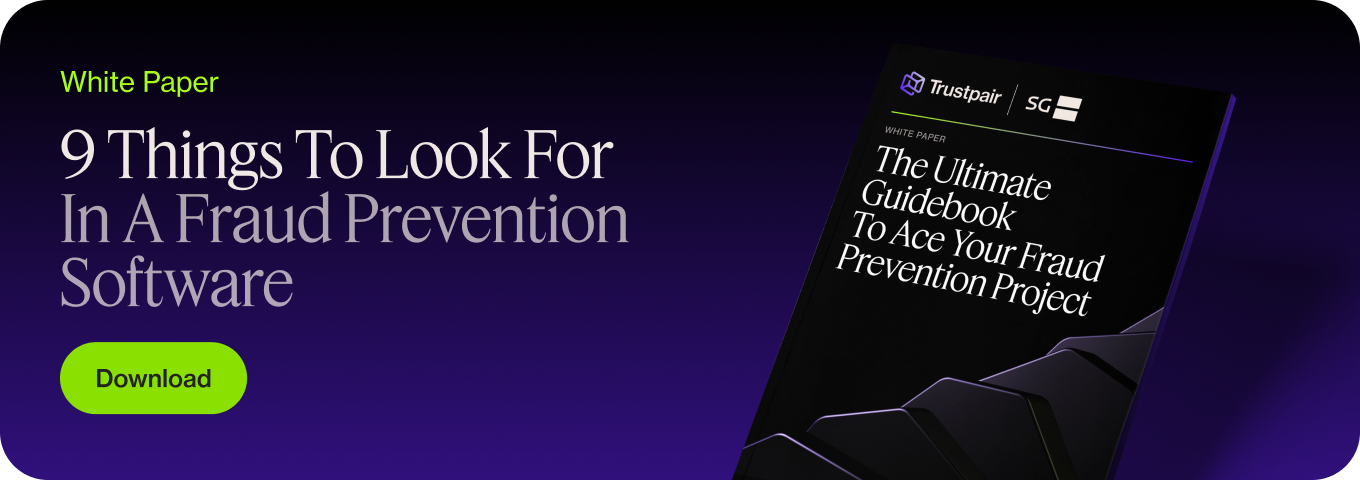In 2022, 6 in 10 US companies were the victim of at least one fraud attempt. 12% of US companies were targeted by more than 10. This alone underlines the need to implement a fraud prevention solution like Trustpair.
In our latest white paper, learn about all the steps and criteria to implement the right fraud prevention software for your business.
Payment fraud, a key issue for US companies
The high fraud numbers in the US can be explained by insufficient measures and by the increasing sophistication of fraudsters, now closer to cybercriminals than amateur computer whizzes. Company processes are also more complex, which factors in the rise of payment fraud: scammers take advantage of this complexity to spot the loopholes and infiltrate the systems. On top of that, the move to paper checks also opens the door to more fraud.
Financial loss isn’t the only impact of payment fraud
On top of the obvious financial impact – which can quickly amount to a couple of millions of dollars, fraud has other consequences. A successful fraud event can damage supplier relationships by delaying payments or delivery of goods and services. The same goes for customer relationships and investor trust. It’s safe to say that your brand reputation can suffer a serious hit from successful fraud.
Companies are reacting too little too late
US companies are more mature when it comes to fraud than 5 years ago. However, they still use manual and insufficient prevention measures. For example, 70% of US companies resort to human callbacks to validate new vendor information after a change is requested. This type of manual control is largely ineffective, on top of being time-consuming. They can’t top sophisticated online frauds.
Fighting fraud also means more efficiency
It’s no secret that fraud prevention software is the most effective way to wipe out fraud. In fact, it’s the only way to ensure total reliability of vendor data, through automated and systematic account validation checks. However, that’s not all it brings to the table.
Digitizing risk management also means improving organizational efficiency. How? By automating what used to be manual and low-added-value tasks and saving time for finance teams to focus on strategic missions.
Fighting fraud is a necessity, not a convenience
Companies that rely on manual processes to fight fraud drastically increase the risk of being a successful target and probably face financial and reputational losses. On top of that, manual processes hinder efficiency and competitiveness.
The result? Companies are less profitable and attractive to investors and suppliers alike. Implementing fraud prevention software means finance teams can work with cutting-edge tools and concentrate on high-value-added missions.





